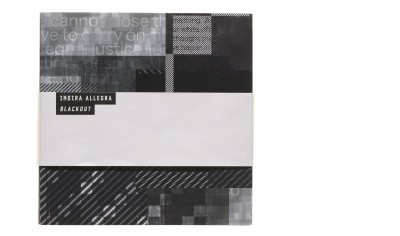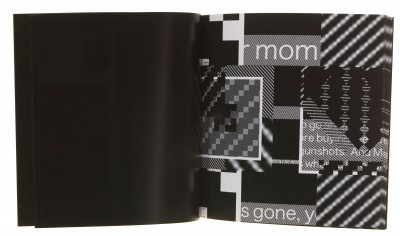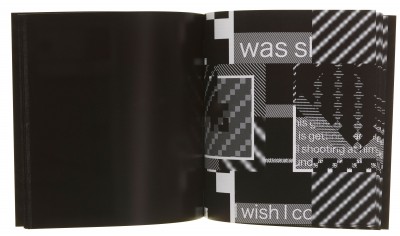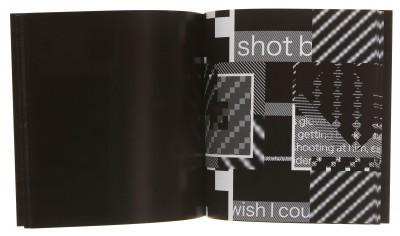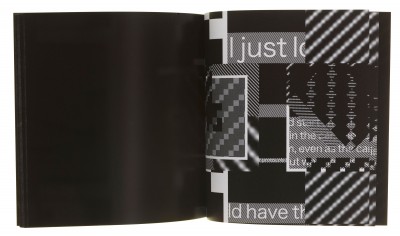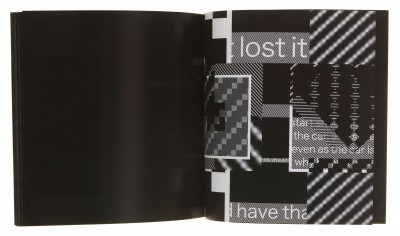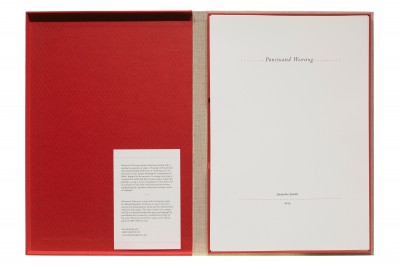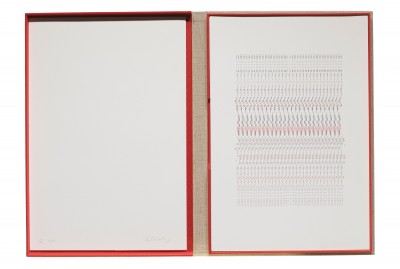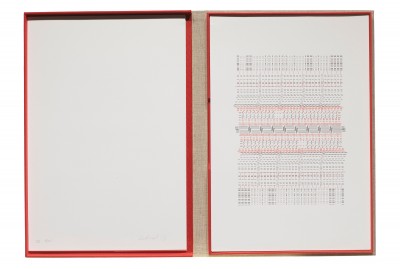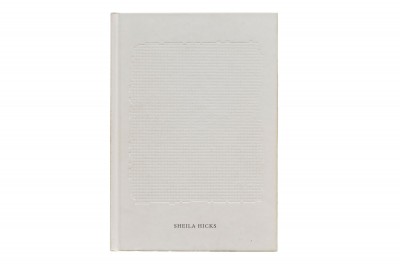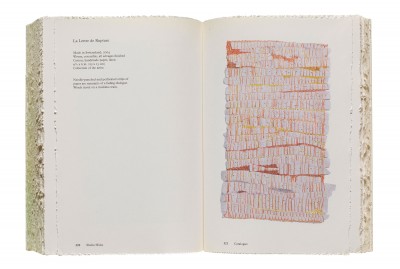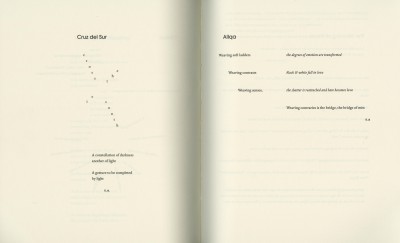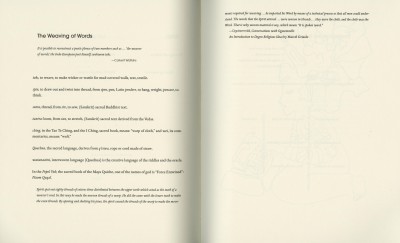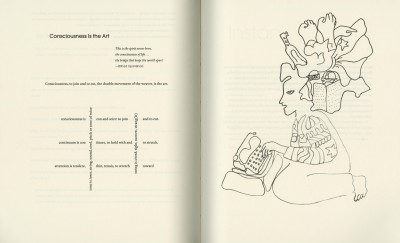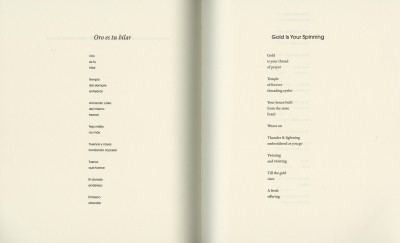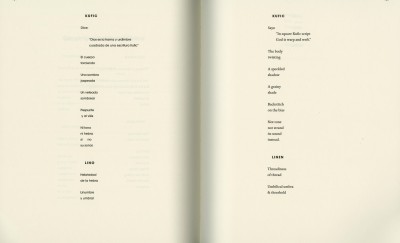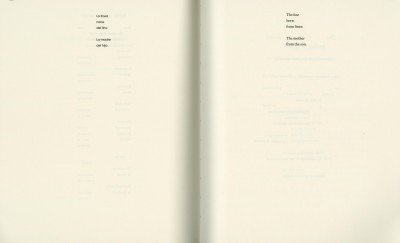News
Books on Text and Textile
Vivian Sming, our new curatorial fellow, pulls on threads within the collection, tying together concepts of weaving and language.
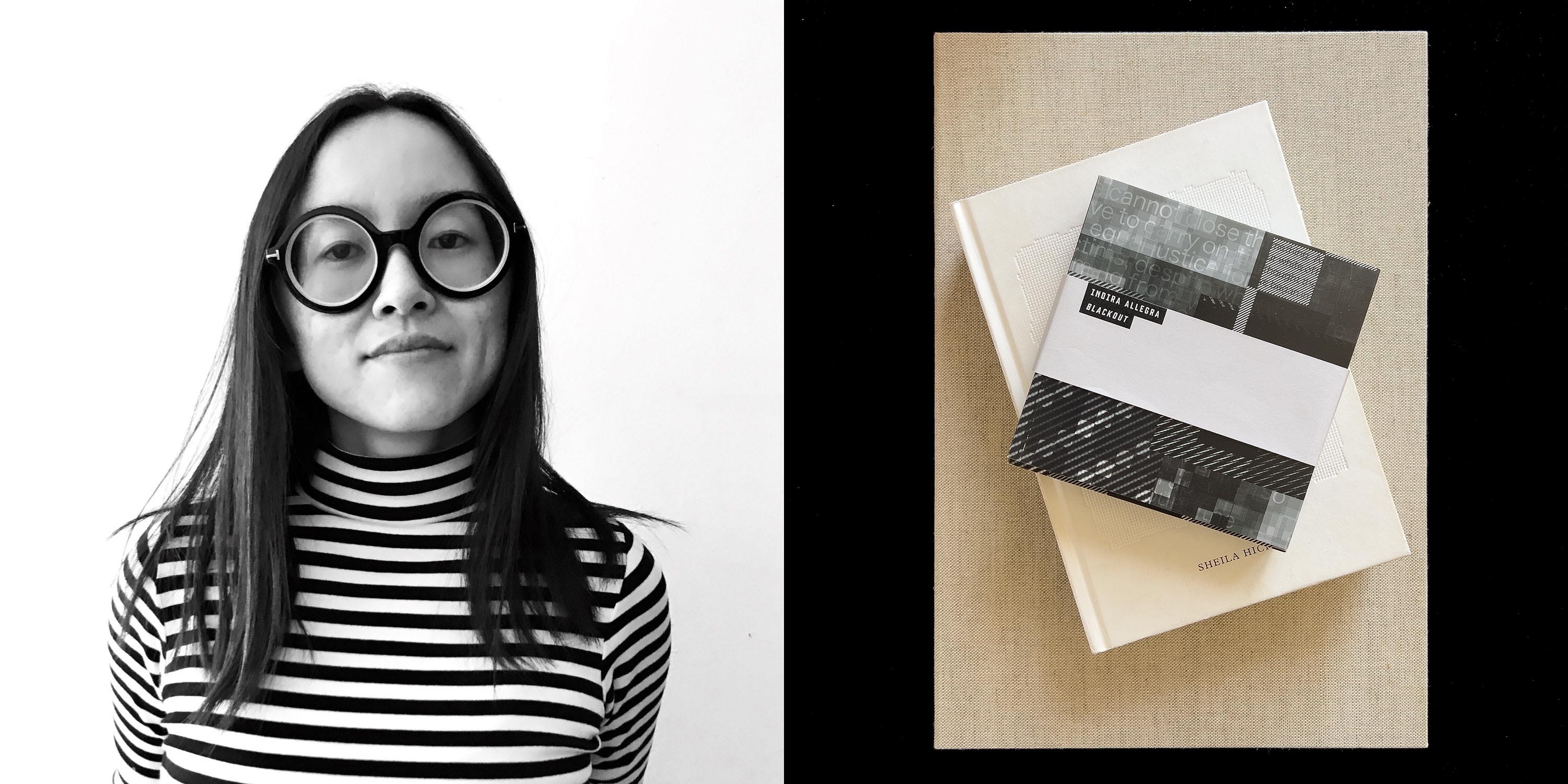
We are proud to announce the Letterform Archive Curatorial Fellowship, a new program designed to strengthen and diversify the collection. Rotating annually, the fellow works with our curatorial team to interpret and share material from the Archive, as well as expand the collection through new acquisitions and connections to artists and designers.
The 2022 fellow is Vivian Sming, an artist-publisher based in the Bay Area, who produces a wide range of artists’ books through their publishing studio Sming Sming Books. Sming’s first contribution to our blog highlights four books that combine weaving and language.
“The word text is rooted in the Latin verb texere, which means ‘to weave.’ Whether you come from a culture that writes along the weft line — the horizontal thread — or the warp line — the vertical thread — the connection between textile and narrative is long-standing.”
— Indira Allegra
Weaving shares a rich history with language. The development of letterforms can be found within the utilization of knots to keep records or the loom’s binary system that led to coding languages. On their own, individual pieces of thread function like letters. When strung together, they form words and sentences, create narratives, hold memories, and share knowledge. Taking inspiration from Indira Allegra’s recent exhibition, I pull the connecting threads to books and printed material in Letterform Archive’s collection by Allegra, Alexandra Janezic, Irma Boom, and Cecilia Vicuña that explore the relationship between weaving and text. These few works in an otherwise expansive collection reveal how weaving can function to memorialize loss, denote time and labor, be expressive and expansive, and give us insight into our place in the cosmos.
Indira Allegra, TEXERE and Blackout
Using text and image, Indira Allegra offers a space to participate in collective grief through their recent work TEXERE: The Shape of Loss Is a Tapestry (2022). TEXERE is an installation of digital tapestry weavings that was on view at Minnesota Street Project in San Francisco from March 19–April 30, 2022. Each tapestry is dedicated to a form of loss — specific experiences such as losing a sense of home, a loved one to a virus, sleep, love of a partner, or the experience of a child as a baby now that they are older. Viewers are invited to engage with the work and mark a loss by contributing words, sounds, and images onto an online platform, which get updated in real time to appear in the installation.
Spliced into strands and woven together, the words and images are abstracted and illegible, distilled to blocks of color. The digital tapestries are displayed on double-sided screens that are suspended from the ceiling and glow in an otherwise completely darkened space. Rectangular in shape, the screens are sized to a human body, appearing almost tomb-like. It feels like a contemporary crypt. At different intervals, all of the panels fade to black, enshrouding the space in complete darkness, then reemerge again. The pacing of the fade-out and fade-in is like a breath — an inhale and an exhale. A moment of pause to take in and release.

More than two years into the pandemic, Allegra’s grief-work comes at a necessary moment. The artist reflects, “What has become clear to me is that we need more rituals and collective, contemporary making practices to memorialize the losses in our lives to support what I call a collective grief hygiene.”2 Grief, as someone close to me once described it, is like a muscle. It’s a pang in the heart, and the more you exercise it, the more it becomes easier to go there. Not easier as in less painful, but easier as in proximity. Through their work, Allegra insists that we make the time to grieve — let it simmer, live with it, find beauty in it, and perhaps turn it into something else. To let that muscle be pulled. For many of us, it’s not a choice to be able to move about the day without grieving. Personal and community losses are compounded by national and global losses, and it can be immobilizing. Creating practices to acknowledge and share these experiences is crucial in order to transform and continue.
TEXERE follows Allegra’s previous work Blackout (2015), a series of six digital weaving tapestries created from statements made by the families of victims to police violence: Aiyana Stanley-Jones, Tamir Rice, John Crawford III, Amadou Diallo, Tarika Wilson, Eric Garner, Yvette Smith, and Eleanor Bumpurs. These grief-stricken accounts scroll at varying speeds in between digitized weave patterns of twill, a type of fabric used to make police uniforms. Allegra explains that twill is “really durable and is sought after by a lot of uniform makers because it also washes bloodstains out easily and it remains pressed — freshly pressed — no matter what the person who is wearing it is doing. Twill is strong and durable, resistant to tears, drapes well, and is wrinkle-resistant.”3
Selected spreads from Blackout
Click an image to enter fullscreen view, then pinch or use browser zoom to enlarge.
In 2017, Allegra and I worked to create a volume of books from the original animations. The books are small in size and designed to mimic a swatch book. They can be activated as a flip book, or experienced slowly page by page, allowing the reader to sit with the space between statements like “I just” and “lost it.” Unlike in TEXERE, the text in Blackout isn’t weaved into the pattern, as much as it is obscured or censored by it. Blackout reveals the many layers that structural violence is designed in policing — that even down to the weave pattern of clothes worn, a deliberate decision has been made to protect the wearer from evidence. It is haunting, especially when viewed alongside the text, which the reader is only ever able to ascertain fragments of, but never the full story. Experiences of grief, after all, often surpass words, beyond comprehension or fully-formed sentences.
Alexandra Janezic, Punctuated Weaving
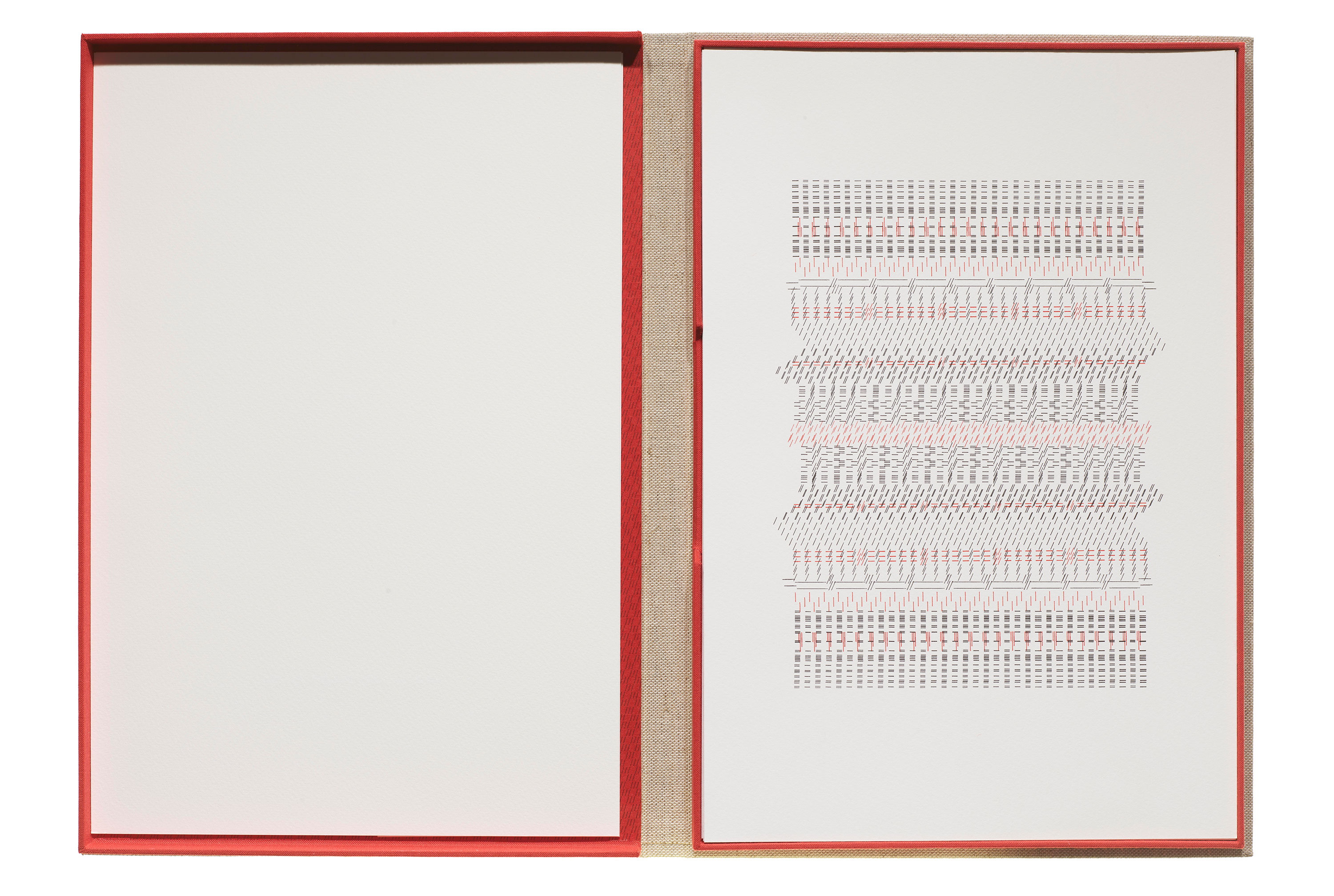
Alexandra Janezic’s Punctuated Weaving (2015) is an editioned series of letterpress weavings, with each thread made entirely out of punctuations. Held in a clamshell box, five prints are created from black and red ink on white paper. En dashes, em dashes, hyphens, colons, semicolons, commas, slashes, caesuras, and tildes hold a formal function, as lines to create the visual form of a tapestry. Punctuations, however, also serve a linguistic function. They represent pauses, utterances, moments of silence, or affect. They signal the in-between, the unsaid, the implied. As Janezic understands, “In the perspective of a hyphen, each mark was striving for continuity, the previous hyphen reliant on the last for its meaning. Punctuation symbols have meaning comparable to words.”4 Each weaving then can be interpreted as a long, continued pause, with the marks and spaces between them presenting opportunities to imbue with meaning.
The punctuations on the page denote the passage of time and labor, formed with precision and repetition. Janezic reflects on the process of creating the piece, “The lines of metal type had been moving up and down the press bed the entire span of printing. One line of type was printed, moved, and reprinted to create each new layer of ‘warp’ or ‘weft.’ The resulting pieces are a complex timeline of decisions and movements.” Seen as a whole, Punctuated Weaving thus becomes a way to mark this otherwise invisible effort.
Irma Boom, Sheila Hicks: Weaving as Metaphor
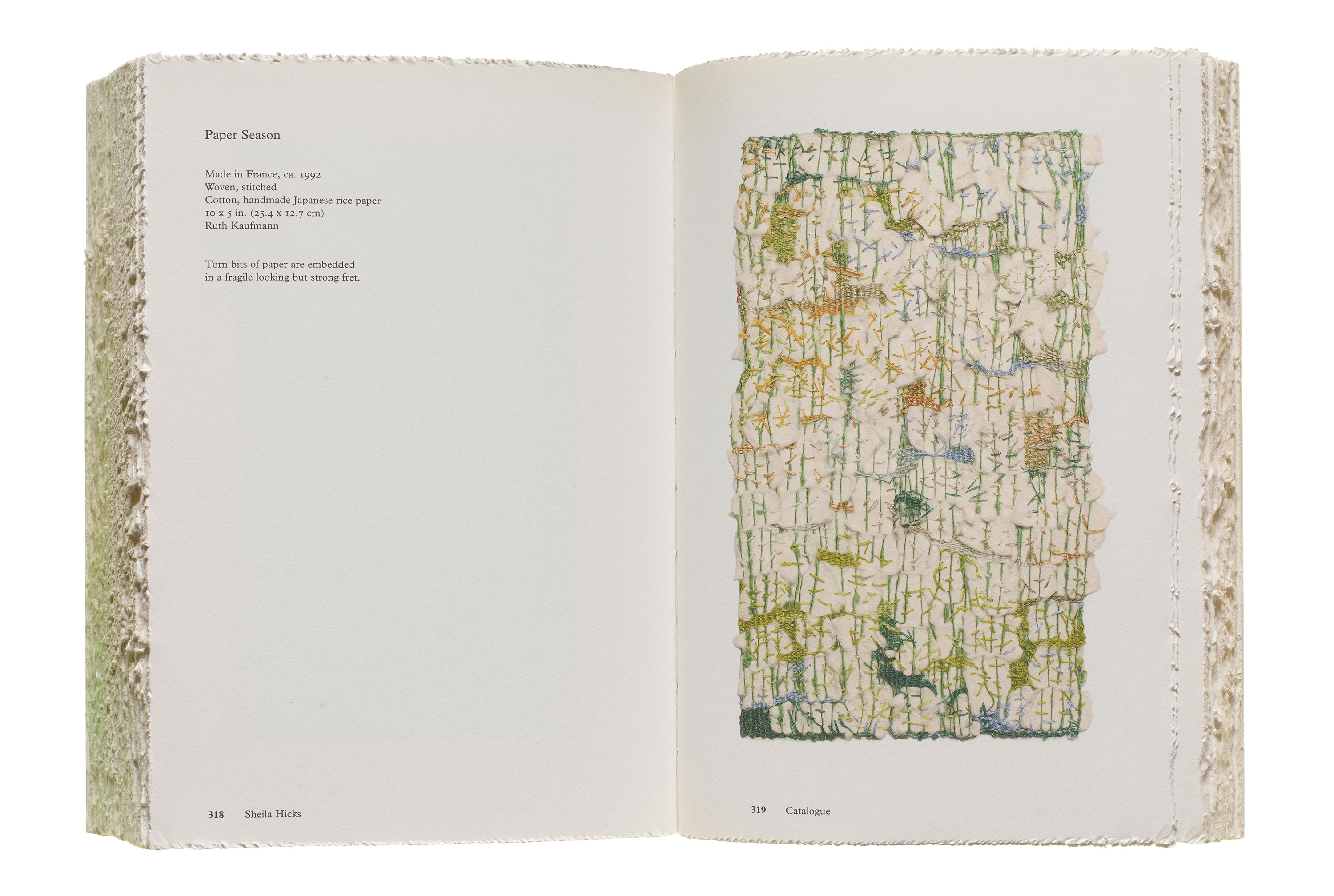
Sheila Hicks’s catalog Weaving as Metaphor contains hundreds of the artist’s small-scale weavings, many of them expressive and playful in their linework, use of color, and abstraction. The book, designed by Irma Boom, sports an all-white cover with an embossed weaving and soft jagged edges around the pages. Among a wide variety of works, several pieces in the book are created with paper and hint at Hicks’s approach to weaving as dialogue.
Paper Season (ca. 1992) is a small weaving using thread in light shades of yellow, oranges, greens, and blues. The artwork’s description notes: “Torn bits of paper are embedded in a fragile looking but strong fret.” The threads are not holding the pieces of paper in an organized way as a way to repair or reconstruct the page. Instead, the paper is treated as a material, and the threads are strung between and around them, holding everything together in place. Another weaving in the book, La Lettre de Rupture (2004) is described as: “Needle-punched and perforated strips of paper are remnants of a fading dialogue. Words travel on a trackless train.” Holes of varying sizes create constellations in the strips of paper, woven with yellow, orange, and peach threads. Like the former piece, La Lettre de Rupture doesn’t follow a predictable pattern, and instead meanders.
The catalog’s opening essay by Arthur C. Danto, titled “Weaving as Metaphor and Model for Political Thought,” presents Plato’s understanding of weaving as a metaphor for the state, with each weave as the individual and the whole fabric being the union, forming a cohesive political order. If this is the case, Hicks shows that unity is not necessarily always uniform nor even. Weaving can be disarrayed, have holes and gaps in between, and yet can ultimately produce strength.
Cecilia Vicuña, New and Selected Poems of Cecilia Vicuña
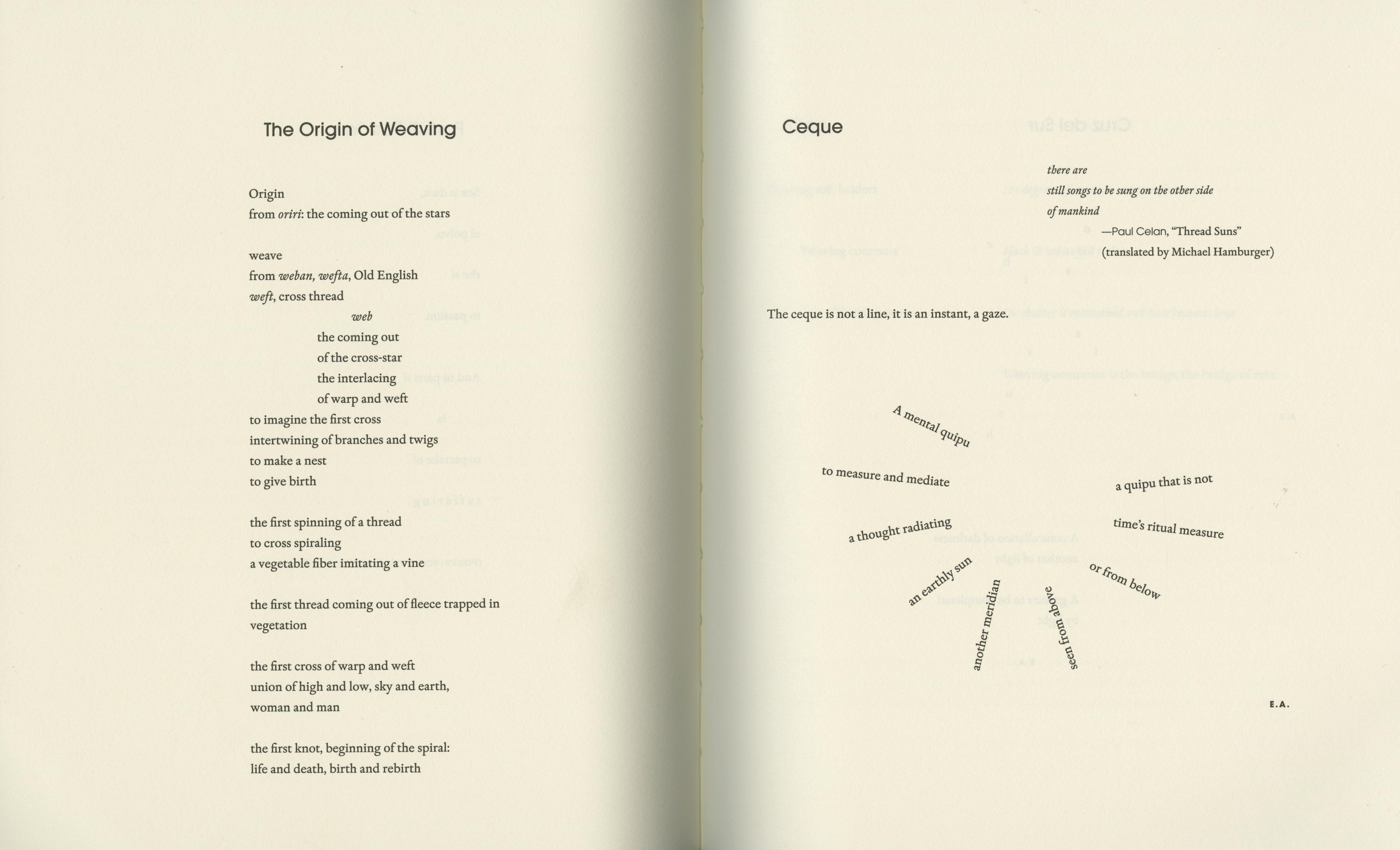
New and Selected Poems of Cecilia Vicuña (2018) collects Cecilia Vicuña’s poems spanning from 1960s to 2000s into one large volume. As an artist and poet, Vicuña works with textile, found objects, performance, and language interchangeably. One collection in the book, The Precarious/QUIPOem (1997), is dedicated to Vicuña’s poems on quipu, a pre-Columbian Andean language destroyed under colonization. Quipu is based on a complex system of knots with colored thread, used for record keeping, tracking genealogies, and storytelling. Vicuña sees quipu as “a poem in space, a way to remember, involving the body and the cosmos at once. A tactile, spatial metaphor for the union of all.”5 While the artist explores the quipu form as textile sculptures that are hung or performed, the poems in the chapter pinpoint the etymologies of weaving and language.
In “The Origin of Weaving,” Vicuña traces the word weave to the action of crossing thread—a basic action shared amongst lifeforms, such as one that birds make when forming a nest. The poem “The Weaving of Words” is composed of lines of definitions spanning cultures that demonstrate how the relationship between weaving and thought, dialogue, and language is deeply rooted. Another piece, Word & Thread, opens with, “The word is a thread and the thread is language.” The weaver is thus a writer, pulling thread and materials or letterforms and languages to thread together to create a whole that is the sum of its parts.
“To identify as a weaver, then, is to champion a way of working that is unafraid of tension — be that tension material or emotional. To be a weaver is to be a storyteller, creating tapestries that narrate human memories and human relationships with one another and the cosmos.”6
— Indira Allegra
“The thread dies when it is released, but comes alive in the loom: tension gives it heart.”7 — Cecilia Vicuña, translated by Rosa Alcalá
— Vivian Sming, 2022 Letterform Archive Curatorial Fellow

